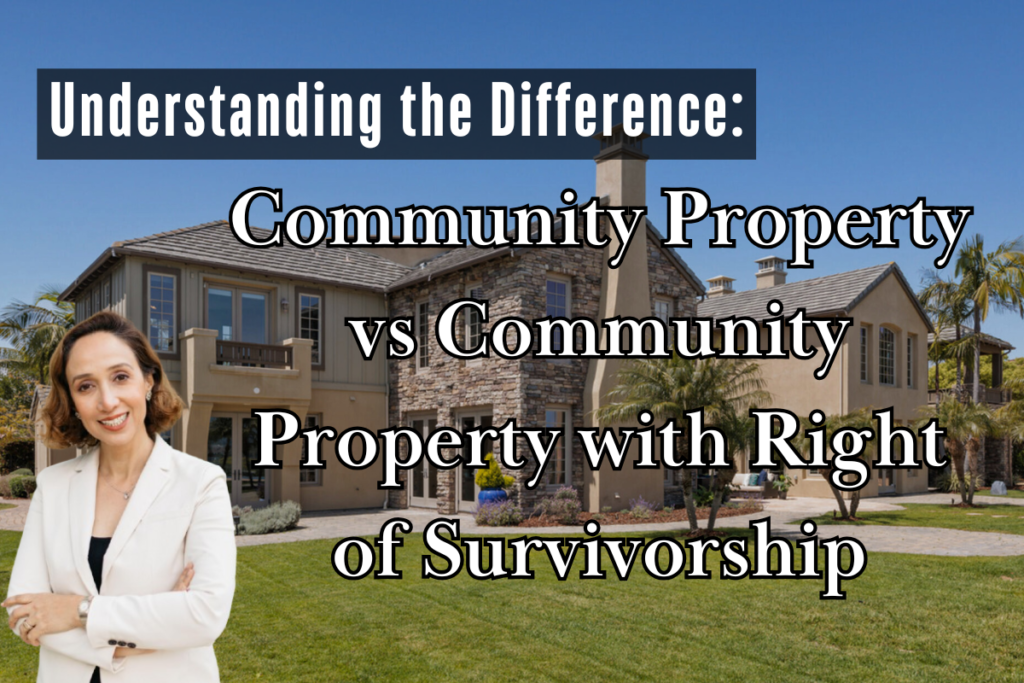
When owning property with a spouse, it’s important to know the legal implications of how the title is held, especially in terms of inheritance. Two common forms of vesting in community property states are “Community Property” and “Community Property with Right of Survivorship.”
Key Differences
1. Community Property
If a property title is taken as community property without specifying “Right of Survivorship,” certain legal procedures are necessary upon the death of one spouse. Before July 1, 2001, the following steps were required:
✓ An affidavit must be recorded, stating:
a. The property has always been considered community property.
b. 40+ days have passed since the decedent’s death.
c. No probate notice (under Probate Code §13541) was recorded by another heir.
d. The property did not pass to someone else under a will or by intestate succession.
e. The property was not placed in a trust via the decedent’s will
f. There are no probate proceedings under Probate Code §§13502 and 13503
2. Community Property with Right of Survivorship
After July 1, 2001, if the title includes “with Right of Survivorship,” the process is simplified. In such cases:
a. None of the above requirements apply.
b. You simply need to record an Affidavit of Death of Spouse, similar to Joint Tenancy.
Why It Matters
◦ Simplifies inheritance – Including “with Right of Survivorship” makes sure that the surviving spouse automatically receives the property without extra legal steps.
◦ Ease of transfer – It makes the process much simpler and stress-free during a difficult time.
Always check that your property title includes “with Right of Survivorship” if you want it to pass directly to your spouse. This small addition can make a big difference.
Source: California Title Company


